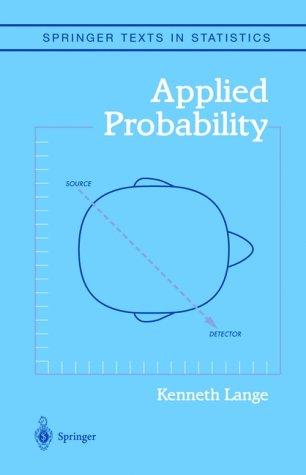As an example of the hidden binomial trials theory sketched in Problem 10, consider a random sample
Question:
As an example of the hidden binomial trials theory sketched in Problem 10, consider a random sample of twin pairs. Let u of these pairs consist of male pairs, v consist of female pairs, and w consist of opposite sex pairs. A simple model to explain these data involves a random Bernoulli choice for each pair dictating whether it consists of identical or nonidentical twins. Suppose that identical twins occur with probability p and nonidentical twins with probability 1 − p.
Once the decision is made as to whether the twins are identical or not, then sexes are assigned to the twins. If the twins are identical, one assignment of sex is made. If the twins are nonidentical, then two independent assignments of sex are made. Suppose boys are chosen with probability q and girls with probability 1 − q. Model these data as hidden binomial trials. Using the result of Problem 10, give the EM algorithm for estimating p and q. What other problems from this chapter involve hidden binomial trials?
Step by Step Answer:







